Nirwan Ahmad Arsuka
Source - http://www.thejakartapost.com/news/2015/12/08/a-tale-prehistoric-horses-south-sulawesi.html
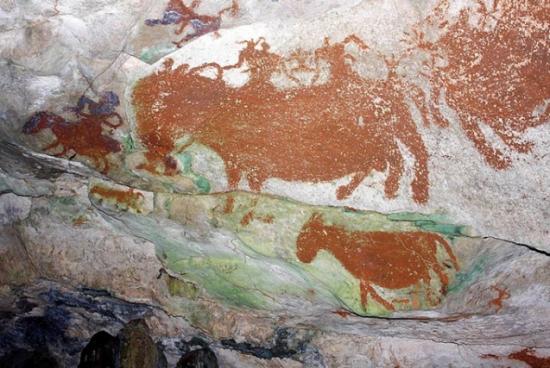 A horse painting in Liang Kobori (Cave of Inscription) in Muna Island, Southeast Sulawesi
A horse painting in Liang Kobori (Cave of Inscription) in Muna Island, Southeast Sulawesi
Horses were once thought to have come to the Indonesian archipelago around the 13th century along with the arrival of the until-then invincible fleet of the Yuan Dynasty from China founded by Kublai Khan.
The soldiers of the mounted cavalry that established the largest empire in history came to impose their imperial supremacy on the archipelago, specifically on Java, which was at the time witnessing the fall of the Singosari kingdom.
That mighty army was driven back to the sea by Raden Wijaya’s troops, who later established the Majapahit kingdom. In their retreat, the armada left many high-quality war horses behind. The descendants of those war horses still roam the Dieng Plateau and appear very similar to Mongolian horses.
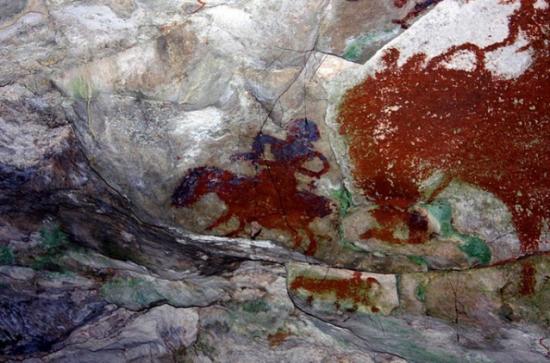 A horse painting in Kobori Cave, Southeast Sulawesi
A horse painting in Kobori Cave, Southeast Sulawesi
But the perception that horses were first brought to the archipelago by the Mongol armada is a grave error. Horses were already found in the archipelago centuries before the arrival of the armies from the north. Borobudur and Prambanan Temples, built around the 9th century, are decorated with several panels depicting horses.
Outside of Java, historical remains and cultural artifacts featuring horses can be found in many places.
In North Sumatra, especially in the Batak area, horses have been a part of society since the establishment of megalithic cultures. In a number of places in the clustered islands of Nusa Tenggara or Lesser Sunda, the horse still has a strong presence is is still a cherished part of people’s cultural identity. In a cave called Kobori on Muna Island, Southeast Sulawesi, which the locals called Liang Kabori (Cave of Inscription), several paintings were found depicting horses, kites and many other things over 130 individual red paintings from the entrance to the deepest part of the cave.
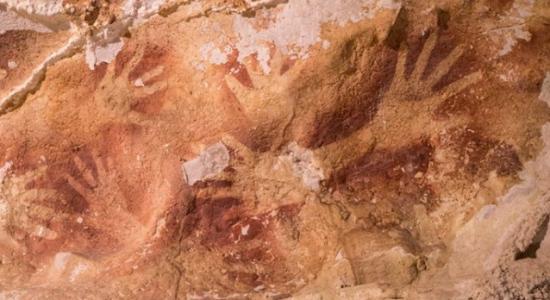 A hand stencil in Leang leang Cave in Maros, South Sulawesi
A hand stencil in Leang leang Cave in Maros, South Sulawesi
Not far from Muna Island, about 250 kilometers to the west, in the Leang Leang Cave in Maros regency, South Sulawesi, another cluster of caves with ancient paintings was found. A joint research project between Indonesia’s National Centre for Archaeology (Arkenas), the University of Wollongong and Griffith University (Australia), the Archaeological Heritage Preservation Institute and the Center for Archaeology in Makassar, South Sulawesi, gave new information about the age of these wall-paintings. Using a Uranium-series dating method, they estimated that the paintings were around 35,000 to 40,000 years old.
The artwork of the Kobori Cave instantly remind one of the paintings of horses and all sorts of four-legged creatures that grace the walls of the Lascaux and Pech Merle Caves in France or the Altamira in Spain. These pre-historic images from Europe are estimated to be around 35,000 to 40,000 years old and have long been regarded as the oldest paintings in the world.
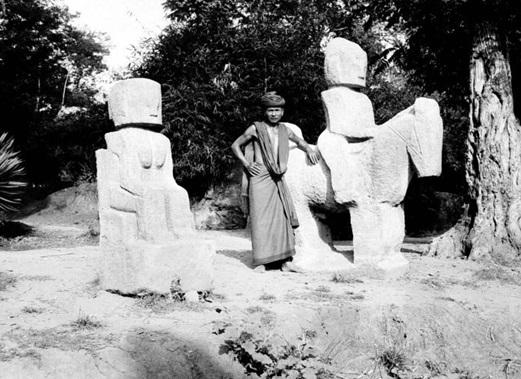 A megalithic horse statue in Balige, North Sumatra. (Photo courtesy of Tropen Museum)
A megalithic horse statue in Balige, North Sumatra. (Photo courtesy of Tropen Museum)
The research project conducted on the paintings in Maros, challenged those long-held beliefs, dating the Maros paintings as being from a similar, or even older, period.
One kind of painting in Maros, a hand stencil, is the oldest visual art work of its type in the world. And a pig-deer painting next to the hand stencil has been estimated to be the oldest figurative painting in the world.
These discoveries are considered to put to rest the Eurocentrism of ancient art that had until now claimed Europe as the birthplace of visual art.
The age of the paintings in Maros have also led experts to conclude that Europe and Asia developed visual art at roughly the same time, and that visual art has even deeper roots beginning in Africa.
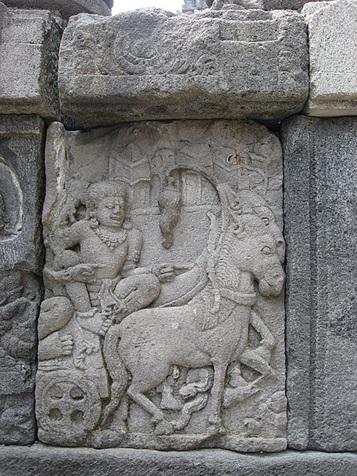 A carving at Prambanan Temple, circa 8th century.
A carving at Prambanan Temple, circa 8th century.
All photos provided by Nirwan Ahmad Arsuka.